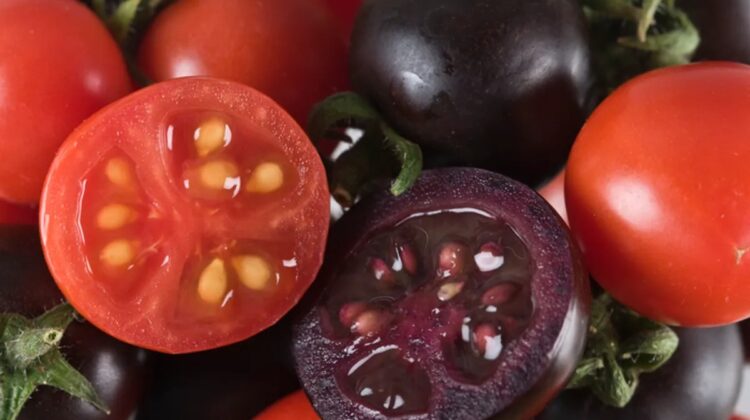
Do you want purple ketchup with that?
Purple tomatoes genetically modified to be high in antioxidant pigments might be on the dinner tables of gardening Americans by next spring, owing to a recent ruling by US authorities.
The United States Department of Agriculture (USDA) recently approved a review that would allow Americans to buy seeds and cultivate the “Big Purple Tomato” produced by Norfolk Plant Sciences (NPS) beginning in early 2023.
The genetically modified (GM) tomato was approved after authorities determined that it did not offer a greater plant pest danger than regular red tomato relatives.
“This is incredible; I never imagined I’d see the day.” “We are now one step closer to my ambition of sharing nutritious purple tomatoes with the many people who are delighted to eat them,” said Professor Cathie Martin of the John Innes Centre in the UK in a statement.
Professor Martin and a team from the John Innes Centre originally created the unusually colored tomatoes in 2008. They were generated by a relatively easy genetic mutation that commanded the plants to produce large quantities of anthocyanins, the rich pigment found in foods such as blueberries, red cabbage, and a variety of other foods commonly referred to as “superfoods.”
The typical red tomato already has anthocyanin-producing genes, but they are not “switched on” in most fruits. There are several purple-skinned tomato types, but their flesh does not contain a lot of anthocyanins.
To activate the tomato’s intrinsic anthocyanin-producing capabilities, scientists introduced two genes from snapdragons, a brightly colored flower native to North America, Europe, and North Africa.
Not only does it look nice, but there is some evidence that high anthocyanin levels are connected to specific health advantages, including a lower risk of heart disease. However, not all of the alleged health benefits of anthocyanins have been validated, and others contend they do not live up to the hype.
The road to securing regulatory permission has been lengthy and winding. “When Cathie and I formed NPS about 15 years ago to bring to market health-promoting, genetically altered purple tomatoes created in the UK, we never expected it would take so long to secure regulatory clearance,” says Professor Jonathan Jones of the Sainsbury Laboratory.
Genetically modified tomatoes have been available for decades, but they have proven to be a challenging industry to grasp for scientists and entrepreneurs. The Flavr Savr tomato, which had been genetically engineered to have a longer shelf life, enhanced fungal resistance, and a slightly different texture, rose to prominence in the 1990s.
It was approved by the FDA in 1994 after an assessment determined it to be “as safe as tomatoes cultivated conventionally,” and the tomatoes quickly appeared on grocery shelves. The venture, however, failed within three years, and manufacture of the Flavr Savr halted in 1997. Anxious about the notion of “Frankenfood,” the American people simply couldn’t get into GM tomatoes.
Perhaps, after more than 25 years, tastes have shifted and the United States is now ready for the Big Purple Tomato.

Leave a Reply